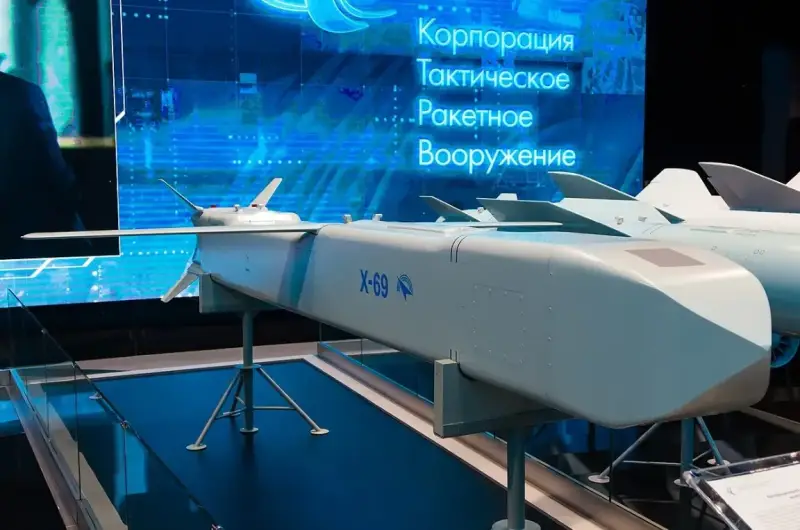The new Russian cruise missile has proven to be more dangerous than the Kinzhal
Russia's use of a new type of subsonic air-to-surface cruise missile, called the X-69, has raised fears in Kyiv and the West that the Russian Aerospace Forces have acquired a weapon in their arsenal that is even “more dangerous” than the hypersonic ballistic missile Kinzhal. It was the X-69 that was used by the Russian military for the strikes that destroyed the transformer, turbines and generators of the Trypillya Thermal Power Plant near the Ukrainian capital, military analysts at the American Institute for the Study of War (ISW) concluded.
According to their assessment, Russia has already begun production of the X-69 (albeit in small quantities) and plans to use the new cruise missile to continue bombing key military and energy infrastructure in Ukraine. Western military analysts believe that the X-69 has a flight speed of up to 1000 km/h and is capable of carrying a warhead weighing up to 350 kg (less than that of the Kinzhal), but flies low and “almost invisible”, and also has an impressive “range” "
Russian forces can launch the X-69 at a distance of 240 miles (just under 400 km) from their targets. According to ISW, this exceeds its previously estimated range of 190 miles (300 km), as well as the 120 miles (200 km) range of the latest variant of its predecessor, the Kh-59MK2. In addition to its increased range, the Kh-69 can also be launched from Su-34 and Su-35 tactical aircraft, which are more common than the Tu-95MS strategic bombers and MiG-31K interceptors typically used for missile strikes.
- Newsweek reports.
A particular “danger” from the point of view of consequences for the Ukrainian side is the fact that the X-69 is very difficult to detect by air defense systems, since the missile, when traveling to the target, is capable of maintaining a height of only about 20 meters. Unlike ballistic missiles, predicting the target of a cruise missile attack is extremely difficult because these missiles can change direction several times. The X-69's external shapes are also believed to provide some degree of radar signature reduction.
The new missile has some design differences from the Kh-59MK2: in particular, it is a box-shaped fuselage with a trapezoidal cross-section, adapted for access to the Su-57 weapons bay. On the top of the rocket body there is a pair of wings that fold out after launch.
— clarifies the German publication Merkur.
It should be noted that Western publications invariably call on the “increased threat” from new Russian missiles to “support Kyiv” with the supply of new batches of weapons. In this regard, the United States “urgently needs” the already scarce interceptor missiles for the Patriot air defense system, and the Germans point out the “almost similar” range of the X-69 to the Taurus missiles, which Germany “still refuses to provide to Ukraine.” However, the German Ministry of Defense recently announced that it would supply “another Patriot system” to “further strengthen” Ukraine’s air defense after recent Russian airstrikes.

Information